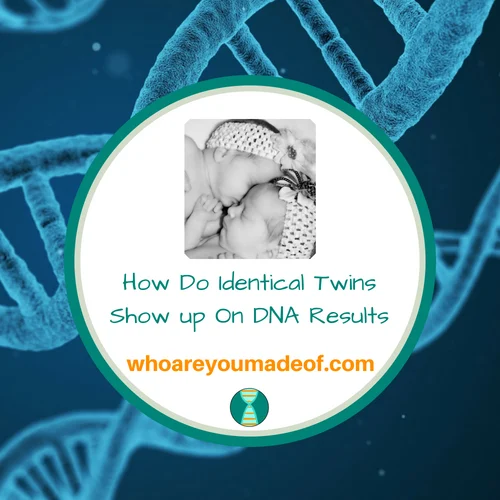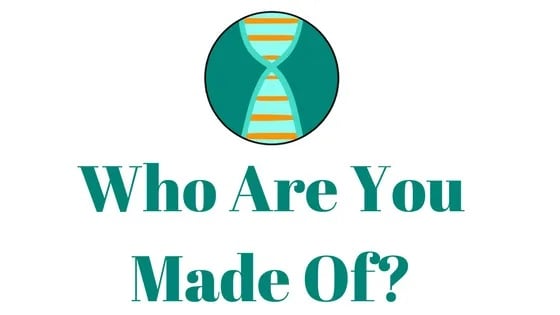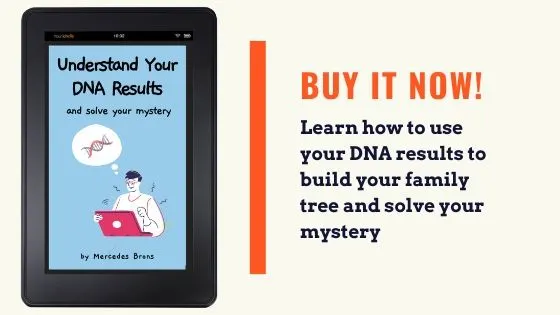Are you wondering how identical twins would match each other on an autosomal DNA test? Maybe you wonder whether their offspring will match each other at typical first cousin levels?
If you have identical twins in your family, or wonder if you do, this post will help you know what to look for as far as shared DNA between identical twins and their descendants is concerned.

This question comes up so often on social media, in my inbox, and elsewhere on the internets - so I figured that a end-all-be-all post on the topic is in order.
Sometimes people think that twins are identical when they really aren't genetically identical
Before we get started with the main topic of the post, it is important to note that some people are twins and look very similar, but are not genetically identical.
A famous example that comes to mind are the Mary Kate and Ashley Olsen twins. They looked very similar when they were small children - similar enough that they could fill in for each other during the same episode of a TV show.
As they grew up, we can see very obvious differences in their appearance, even though they still do look very much like each other.
They are fraternal twins.
This is important to know, since two fraternal twins will only share the same amount as two non-twin full siblings share. Especially for older people, born before some of the modern science we now have access to, fraternal twins could be mistaken for identical twins.
How do identical twins show up on DNA results?
Identical twins who are truly identical will appear as themselves on a DNA test. Depending on the DNA testing company that they test with, it will probably say "Self" in the estimated relationship category.
The approximate amount of shared DNA, in centimorgans (cMs) is 3400.
It is important to note that this post, and this website, addresses primarily autosomal DNA testing. There is evidence that shows that there is enough slight difference between two identical twins as they reach adulthood that an advanced test designed solely to determine paternity in these situations could determine which twin is the parent.
The average paternity test is not sensitive enough to pick up on the very subtle differences in the DNA of identical twins, however, and it will be similar to the results of an autosomal test.
How much DNA does the child of an identical twin share with their parent's twin?
A child of an identical twin will share the same amount of DNA with the identical twin sibling of their parent as they do with their parent. This sounds crazy, since the sibling is technically their aunt or uncle, but the identical siblings have identical DNA, which is the explanation.
This means that it would be impossible for an autosomal DNA test to determine which twin is the parent. A person will share approximately 50% of their DNA, or between 3400-3600 with their parent, and the same amount with the identical twin sibling of their parent.
How do the children of identical twins show up on DNA results?
By now, you might be guessing that the children of identical twin siblings (two identical twins who have children with non-related people) will share more DNA than the "average" first cousins. If you guessed this, then you are correct.
For example, the children of two identical twin brothers will share the same amount of DNA as half-siblings. There will be no distinguishable difference in their DNA compared with typical half-siblings, and as far as I have read, there is no commercially available science that would be able to determine whether they are half-siblings or first cousins (as offspring of identical twins).
This situation is common, and complicated, when someone knows that their parent has an identical twin, and they have a match that falls in range of shared DNA that is common with half-siblings. Is it a child of your parent, or a child of your parent's twin?
The only way to get any insight into the answer to this question would be to get a good understanding of geographical locations, talking to people involved, and viewing vital records. Any clue of this nature could help determine which twin is likely the parent.
How much DNA would the offspring of two sets of identical twins share?
This question isn't as crazy as it sounds since throughout life, we tend to seek out people who share something in common with us. And who better to understand what it is like to be an identical twin than another identical twin?
It doesn't seem like too much of a stretch to imagine that it would be pretty usual for the other twin to become involved with the remaining twin, right? So what about the offspring of two relationships like this? How much DNA would these first cousins share?
The children (first cousins) of two sets of identical twins (two separate sets of identical twins who have children with each other) will share the same amount of DNA with each other as full siblings, which means that they will share between 33-50% of their DNA, or 2300-3900 cMs.
Children of one couple (full siblings) will also share DNA with each other in the same full-sibling range, which will make it impossible to distinguish whether they are full siblings or first cousins, in a genealogical sense.
Conclusion
Fortunately for those of us who are involved in genetic genealogy, the situations that I describe here in this post aren't very common. It's good to know, however, because if there is a pattern of twins in your family, shared DNA could end up being very confusing and it will help you to know what to look for.
I hope that this post helped you get a good idea as to how much DNA identical twins share, and how much DNA their descendants might share.
If you have any other questions about twins and their descendants and the amount of DNA that they might share, post it in the comments at the end of the post so I can answer it and add it to the article - I hope to hear from you!
Thanks for stopping by!


Michael Baker
Wednesday 26th of February 2025
My DNA results show I have a half sister - 1790 match. My father was a twin. My cousin of my father’s twin shows up as 1765 match. We are trying to determine which twin is the father of this half sister who was adopted out at 2 days of age. Her mother is dead & my father & his twin are also dead.
Mercedes
Sunday 9th of March 2025
Hi Michael, Thank you for your question. You mentioned that your father was a twin. Do you know if they were identical twins? Since identical twins have essentially 100% identical DNA, their wouldn't be any way to find out which one was the father using only DNA. If they were not identical twins, did either of them have any children? If they did, the results of the DNA tests could help discover which twin was the father. I hope that this helps! Sincerely, Mercedes
Sue Gillmor
Monday 10th of July 2023
Identical twins actually share 6800 cMs, but it shows up on most major company tests as 3400 cM. I've been trying to research why they only show 3400 and your article came up. We have a set of identical twins in our extended family and the question came up while we were visiting. I'm wondering if it shows up as 3400 cM because it's relatively uncommon and might muddy the waters a bit?
Theresa McCready
Sunday 30th of April 2023
My twin has 2 children whose DNA matches me higher than her? We are identical. It’s not by much, but I found it confusing?
Janet Hale Tabin
Thursday 20th of April 2023
I took two DNA tests through Ancestry.com and my two tests match at 3489 cM. So I initially assumed that was the maximum.
But my brother and I both tested on 23andMe. Born two and a half years apart, we are definitely not twins. But on 23andMe, we match at 3689 cM.
Can you explain this result?
Melissa Archibald
Saturday 8th of April 2023
I am a twin and my twin her daughter, my son and daughter all have a dna test. It's interesting that my son and myself share the same # of CM 3489 with my twin. I am listed more closely related to my twins daughter at 3485CM then my own daughter at 3475CM. My twin is listed more closely related to my son at 3489 CM which is what I share with my twin. My test for my son shows 3486CM, why would that be. It's very confusing.